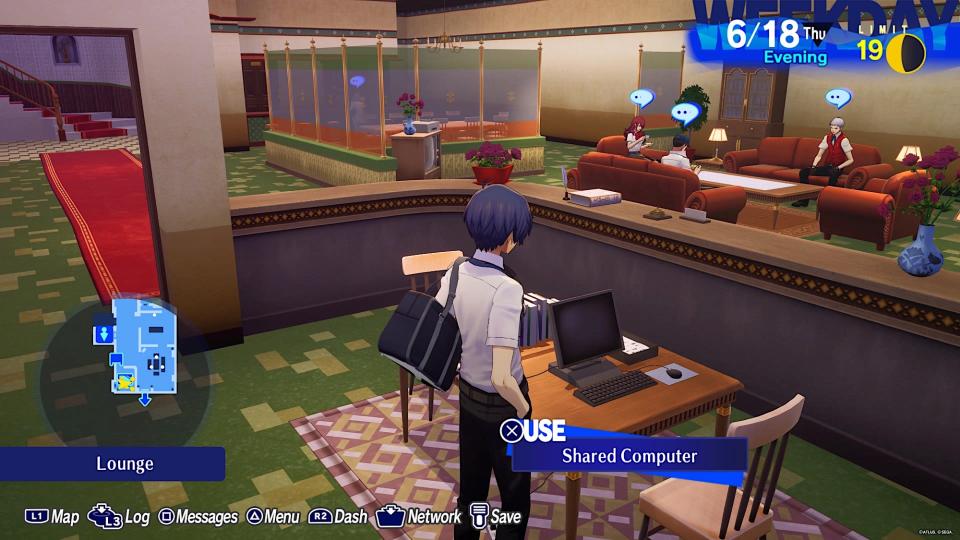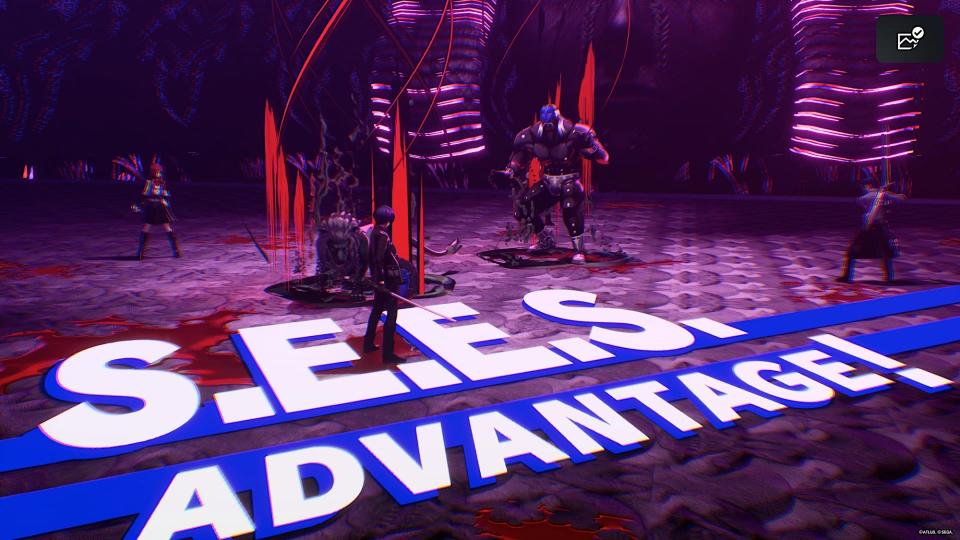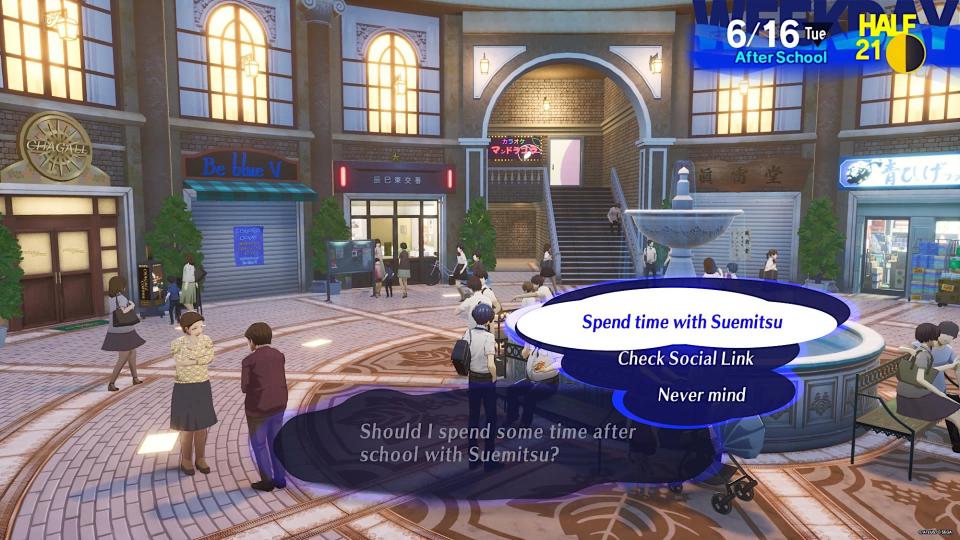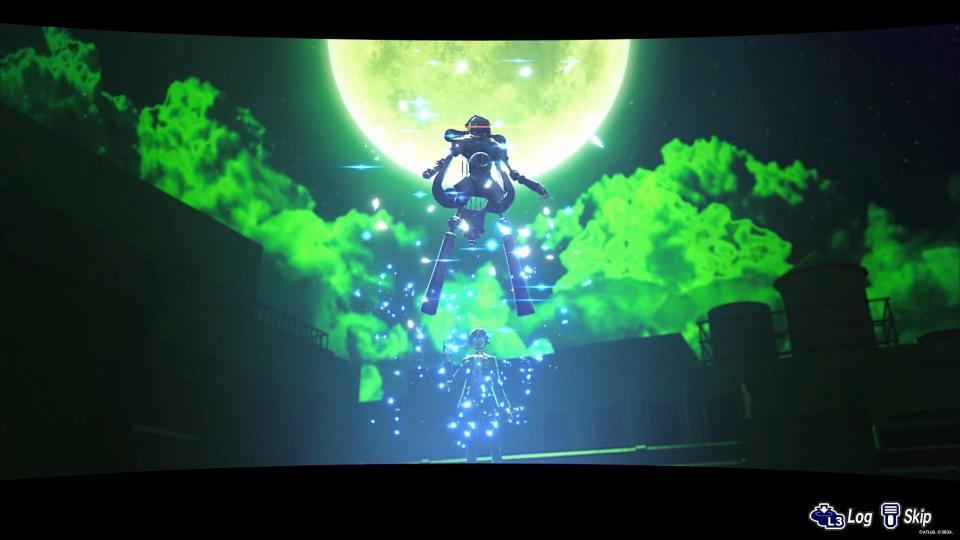If you have a popular gaming franchise, now is the time to decide if you can repackage it, upgrade some textures, or completely reimagine the title for the 2020s. Atlus’ Persona games are one of those enduring series, and the company has already relaunched the last three entries across current-gen consoles, almost entirely unchanged from the original releases.
But with Persona 3 Reload, the company chose the most confusing (and influential) entry to remake. There are some big changes you may not even notice if you haven’t played the 2006 original recently, with new English language voice actors (all the Japanese VAs return from the original) and, interestingly, the most voiced scenes from any game in the Persona series.
Mostly, the only way you can tell this is a remade game are the anachronistic gadgets featured within. Flip-phones sure, wired headphones everywhere, standalone MP3 players, DVD players, internet cafes, desktop PCs as standard. Is 2006 retro now? If it is, I’ll throw up.


Truly, it’s just a gorgeous version of itself. Reload isn’t a total remake like Final Fantasy 7 Remake, so environments are limited to the ones found in the original, including a world map to fast-travel between them all. There’s some Unreal Engine gloss, and while nothing is utterly stunning outside of battles, some parts, like the sun-dappled classroom, look better than anything in Persona 5’s real-world environments.
Reload has the graphical fidelity to do justice to Shigenori Soejima’s original character designs – no more almost chibi-styled character models. The difference between 2D art and 3D models is often imperceptible.
The graphical upgrade is the biggest change; the remaster takes advantage of technological advancements across the three generations of consoles that have launched since the original game debuted on the PlayStation 2. The original Persona 3 was criticized for repetitive environments and battles and while Reload doesn’t try to address the former, battles are improved.


Visually, even compared to Persona 5 Royal, the characters are more detailed and more fluid, especially during their anime-styled attacks. The personas – the magical spirits you use to wield magic, defy fate and all things Atlus – look and move better, too.
The game has also gone through a Persona 5 filter of sorts, too. The menus and battle results screens are now dynamic and snappy, with an aqua-blue color scheme suiting the third game’s theme. So yes, Atlus did it again: It made menus cool. There are also new animated scenes, while some old scenes have been recomposed with the latest game engine.
Fights look better, too, and they also play better. It’s still a turn-based RPG, where enemies and allies take turns attacking each other. In Persona games, the battle dynamic hinges on striking an enemy’s weak spot, allowing for extra attacks and interrupting their turn. P3R has integrated some of the series’ quality-of-life improvements, including the ability to ‘pass’ your turn to another player (if you hit an enemy’s weak point), who can perhaps hit harder or topple one of the other enemies.
Also, more often than before, when your character achieves a critical hit or topples an enemy, you’ll get an anime-style close-up cut of the character’s face and a more dynamic Persona summoning flourish. I love it. Critical attacks have also been made more cinematic and these improvements help make what can be repetitive fights seem a little more entertaining. Finishing attacks (all-out attacks that feature the whole party) result in a slick victory screen like Persona 5.
Theurgy is the new battle dynamic introduced in Reload. It’s best to consider them like ultimate attacks (or limit breaks, perhaps): high-powered attacks that take time to build up before you can unleash them. Why call them Theurgy? The word means the “effect of a supernatural or divine agency in human affairs,” which is the Persona series’ jam.
While these attacks will charge through typical battle behaviors, each character has a particular characteristic that, if leaned on, will charge the gauge substantially faster. For one it might be landing a status effect on an enemy. For another, it might be buffing party characters. Regardless, it’s often worth doing these specific actions instead of what you planned to do, if only to tap into a powerful attack quicker. I was pleasantly surprised at how frequently I could unleash these special attacks. The protagonist is unique, so he gets a selection of different Thuergy attacks based on multiple Personas he unlocks through the game.


Social links form the game’s backbone and how your character spends time between supernatural fights. Unlike recent Persona games, improving your relationships with NPCs in Persona 3’s world doesn’t offer you many boons during your fights. However, enhancing your connection can also happen through new “Link Episodes” available to some party members and NPCs. Participating in these can lead to new Persona creations and even stat boosts. Oh, and a deeper story.
Most fights occur in Tartarus, a vertiginous tower split into different sections but typically offering more of the same, whatever level you’re on. This component of the Persona experience is equally familiar (you’ve likely played Hades or any roguelike in the last five years) and frustrating. It can get boring fast, especially if you’ve played the original game, which I’m sure many have. It’s also where the least effort’s been made to improve this game. It is repeated corridor mazes, with treasure, enemies and other distractions scattered around. Sometimes there are treasure monsters – high stakes, high reward enemies that will often run away unless you beat them quickly – and the Reaper, a high-powered enemy that will steamroll you until you’re wielding end-game weapons and a high enough level.
It’s a shame. With Persona 5, exploration and battle areas were themed around that chapter’s antagonist. There were puzzles to solve, parts of the level would change, and even resting spots were factored into the level design. Then there was Mementos, built around the randomly generated levels you’d expect from a Persona title. In this remade Persona 3, you’re running around the same very repetitive environments (with light cosmetic changes) spread across over 250 sets of stairs.


That won’t put off Persona fans; they know what a Persona game is like. There are enough quality-of-life improvements to make this worth replaying if you’ve played the original over the last… two decades. I’m delighted that those improvements include a “network connection,” also plucked from Persona 5, which shows you what other players are up to each calendar day, helping inform how you spend your time/help with the tricky school tests.
I hoped for some new, more complex level design combined with turn-based RPG battles and friendship sim frivolity, but that would have resulted in an entirely new game. I’ll have to wait for Persona 6 – or possibly look elsewhere.

